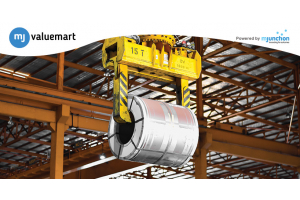How To Ensure That MRO Practices Comply With Safety Regulations?

When it comes to inventory management, MRO stands for Maintenance, Repair and Operations. This inventory includes items such as spare parts, cleaning supplies, lubricants, safety equipment and tools to keep a business running smoothly. To effectively manage MRO inventory, it is important to maintain the right balance of stock levels, so that businesses do not run out of supplies while also minimising excess inventory and related expenses.
MRO inventory management can help ensure that machinery and equipment are maintained in good working condition, reducing the risk of accidents and injuries. Regular maintenance and repairs can help prevent equipment breakdowns, which can lead to accidents and production delays. Also, MRO inventory management ensures that the necessary safety equipment, such as personal protective equipment (PPE), is readily available. This can include helmets, gloves and other items needed to keep employees safe on the job site.
MRO (Maintenance, Repair, and Overhaul) practices in India are subject to various safety regulations to ensure the safety of personnel, equipment and the environment. Here are some ways to ensure that MRO practices comply with safety regulations:
1. Conduct regular safety audits:
Conducting safety audits covering all aspects of MRO operations such as equipment, procedures, training and documentation is essential. Periodic audits help to identify areas of non-compliance or potential safety hazards, providing opportunities for improvement and prompt addressing of concerns.
2. Provide safety training:
There are several benefits of safety training in MRO operations. Safety training involves regular training of personnel in the handling and operation of spare parts and equipment. This can help reduce accidents and enhance functionality. Safety training is a great way to understand the importance of workplace safety and reduce injuries on the job. Personnels can easily identify hazardous objects or situations and take necessary actions to mitigate them.
Safety training also helps establish a safety culture where personnels are trained to immediately report a risk when they spot it. Trained employees work safely while following safety regulations. Safety training also reduces downtime faced by any business. Since, the rate of accidents are lower, there is lower cost and time incurred on repairs. This helps in increased productivity and efficiency. It also improves the morale of the employees as they feel secure and confident in their job. This helps improve employee retention and better management.
3. Implement a safety management system:
To manage safety risks, a safety management system (SMS) is used. It usually includes policies, procedures and documentation to ensure compliance with safety regulations. SMS should be designed in a way that identifies and manages safety risks systematically. They should be regularly updated to make them relevant to current work standards. SMS should include the following components:
- Safety Policy and Organisation Objectives
- Risk management system
- Safety analysis
- Safety promotion culture (training, communication, and awareness-raising programs)
- Documentation and record-keeping
The benefits of having a customised SMS is beneficial due to the following reasons:
- It improves the reputation of the organisation among customers, suppliers and employees alike.
- There is an increased awareness of safety issues with a proactive approach to eliminating possible risk factors.
- Significant reduction in the number of accidents and injuries. This offers a better and safer work environment. This also leads to enhanced productivity in staff.
- Helps ensure regulatory compliance which reduces risk of fines and penalties.
- Improved operational efficiency with reduced downtime, better productivity.





